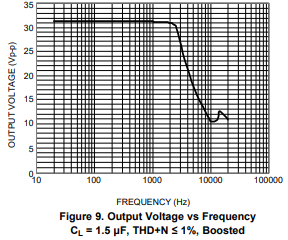Other Parts Discussed in Thread: LM48560, DRV2700
Hi,
I am trying to use the DRV8662 to drive a 1uF PZT up to 12Vp2p. I have set the gain setting to 00, FBB to 36.7k and FBT to 300k.
RSET pin set to maximal BST current limit, I have noticed in above setting, the boost's avg input current is clamped at around 300mA, this happens at 3kHz, as I increase the driving signal's freq, the avg current limit will not increase anymore.
I have also noticed, when I configured FBB to 36.7k, FBT to 507k, the boost's avg input current is clamped around 500mA.
There is no such thing in the datasheet talks about the boost current delivery capability, could you please help?
Do you have better recommendation of a better device to drive my PZT? for up to 4kHz input freq.
Thanks,
Max



